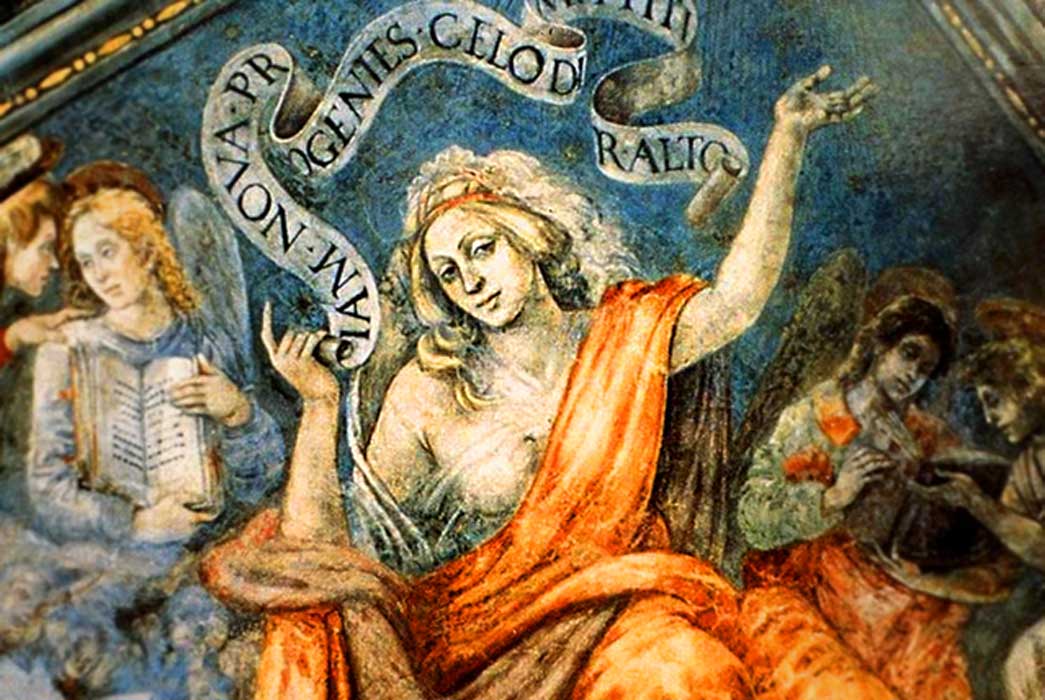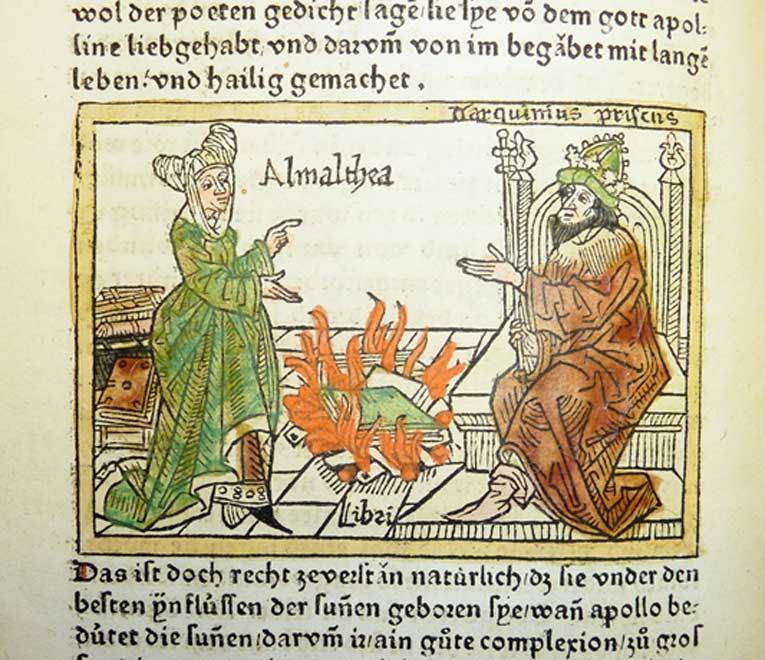
Seers, Women of Action: The Sibyls of the Ancient World
Virgil, in his Aeneid, describes Deiphobe, better known as the Sibyl of Cumae, as coming from “a hundred perforations in the rock, a hundred mouths from which the many utterances rush” (43-5, 163). He further describes “her terrifying riddles” (98-99,164) conjuring the enduring image of a Sibyl as a mysterious prophetess sitting in a temple or a cave, uttering predictions in ecstatic frenzy. Nevertheless, the prophecies of the Sibyls were widely trusted – so trusted that many of their prophecies played key roles in determining the direction of important events.
However, “Sibyl” is actually a generic name which implies multiple seers, oracles and prophetess in the ancient world. Cassandra of Troy, who was not bound to a temple or a cave, and found herself in the middle of all the actions of the Trojan War, is also considered a sibylline figure. She was not the only Sibyl who took on a more hands-on role in the events around her. Many of these women rubbed shoulders with the greatest warriors and leaders of their ages, shaping the future instead of merely foretelling it.
The Proud King, the Old Woman and the Books of Prophecies
Dionysius of Halicarnassus, in the Roman Antiquities, recounts the story of an old woman who visits the last king of Rome, Tarquin the Proud, or Lucius Tarquinius Superbus. She brings with her nine books that she claims to contain sibylline prophecies. The old woman offers to sell the books to Tarquin for what seems to be an exorbitant amount of money and he laughs at her ridiculous price. In response, the woman burns three of the books and leaves without leaving a trace.

Tarquinius Superbus receiving the Sibylline books from a prophetess (Public Domain)
Some time later, the same woman returns with the remaining six books and offers to sell them at the same price as the original nine. Again, Tarquin laughs at her, thinking that the old woman has lost her mind. Again, she burns three of the books and leaves.

Woodcut illustration of Amalthea (the Cumaean sibyl), Tarquinius Superbus and the Sibylline books (CC BY 2.0)
The woman again returns with the remaining three books, still offering them to Tarquin for the same price as the original nine. At last, this time the king does not laugh. Finally wondering at the woman’s purpose, Tarquin sends for the augurs, acquaints them with the problem and asks them what he should do. The augurs declare it to be a great misfortune that he had not purchased all the books. They directed him to pay the woman all the money she asked and to get the oracles that were left. After he begrudgingly pays the woman, the old woman disappears and Tarquin would never see her again for the rest of his life. This woman was Deiphobe, the Sibyl of Cumae, the very woman who accompanied the legendary Aeneas to the underworld and back.
- The Terrifying Doomsday Prophecy of the Tiburtine Sibyl
- Jayabaya — The Seer King of Java who Predicted the Dutch and Japanese Occupation of Indonesia
- The Biblical Witch of Endor: Contacting the Spirit of a Prophet
Thus, Tarquin had the sibylline books laid up in the Capitol. This installation of the Sibylline books on the Capitol was an important event in the religious history of Rome. Tarquin became the first Roman ruler who solemnly consulted what the Greek had recognized as the Delphic oracle, and it proved to be, at least, an early and potent factor in the Hellenizing of Roman religion.




